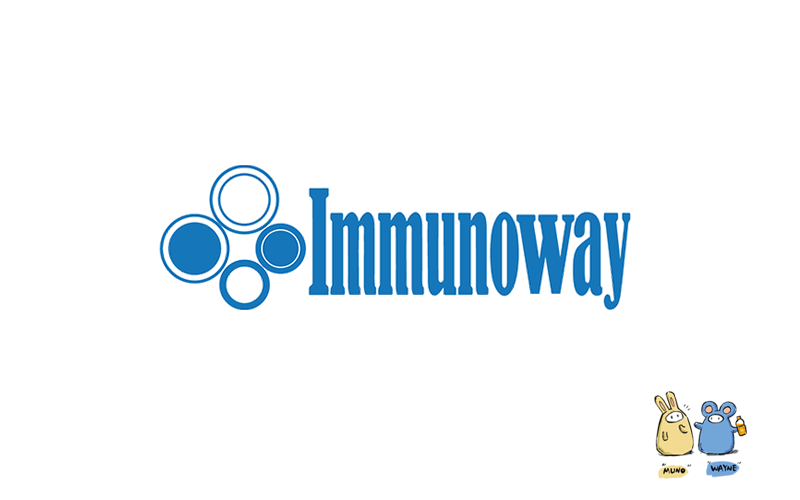
Catalog: YN2313
Size
Price
Status
Qty.
200μL
$450.00
In stock
0
100μL
$280.00
In stock
0
40μL
$150.00
In stock
0
Add to cart


Collected


Collect
Main Information
Target
PAX3
Host Species
Rabbit
Reactivity
Human, Mouse
Applications
WB, ELISA
MW
52kD (Observed)
Conjugate/Modification
Unmodified
Detailed Information
Recommended Dilution Ratio
WB 1:500-2000; ELISA 1:5000-20000
Formulation
Liquid in PBS containing 50% glycerol,0.5% BSA and 0.02% sodium azide.
Specificity
PAX3 Polyclonal Antibody detects endogenous levels of protein.
Purification
The antibody was affinity-purified from rabbit antiserum by affinity-chromatography using epitope-specific immunogen.
Storage
-15°C to -25°C/1 year(Do not lower than -25°C)
Concentration
1 mg/ml
MW(Observed)
52kD
Modification
Unmodified
Clonality
Polyclonal
Isotype
IgG
Related Products
Antigen&Target Information
Immunogen:
Synthesized peptide derived from human protein . at AA range: 150-230
show all
Specificity:
PAX3 Polyclonal Antibody detects endogenous levels of protein.
show all
Gene Name:
PAX3 HUP2
show all
Protein Name:
Paired box protein Pax-3 (HuP2)
show all
Background:
This gene is a member of the paired box (PAX) family of transcription factors. Members of the PAX family typically contain a paired box domain and a paired-type homeodomain. These genes play critical roles during fetal development. Mutations in paired box gene 3 are associated with Waardenburg syndrome, craniofacial-deafness-hand syndrome, and alveolar rhabdomyosarcoma. The translocation t(2;13)(q35;q14), which represents a fusion between PAX3 and the forkhead gene, is a frequent finding in alveolar rhabdomyosarcoma. Alternative splicing results in transcripts encoding isoforms with different C-termini. [provided by RefSeq, Jul 2008],
show all
Function:
Disease:A chromosomal aberration involving PAX3 is a cause of rhabdomyosarcoma 2 (RMS2) [MIM:268220]; also known as alveolar rhabdomyosarcoma. Translocation (2;13)(q35;q14) with FOXO1. The resulting protein is a transcriptional activator.,Disease:A chromosomal aberration involving PAX3 is a cause of rhabdomyosarcoma. Translocation t(2;2)(q35;p23) with NCOA1 generates the NCOA1-PAX3 oncogene consisting of the N-terminus part of PAX3 and the C-terminus part of NCOA1. The fusion protein acts as a transcriptional activator. Rhabdomyosarcoma is the most common soft tissue carcinoma in childhood, representing 5-8% of all malignancies in children.,Disease:Defects in PAX3 are the cause of craniofacial-deafness-hand syndrome (CDHS) [MIM:122880]. CDHS is thought to be an autosomal dominant disease which comprises absence or hypoplasia of the nasal bones, hypoplastic maxilla, small and short nose with thin nares, limited movement of the wrist, short palpebral fissures, ulnar deviation of the fingers, hypertelorism and profound sensory-neural deafness.,Disease:Defects in PAX3 are the cause of Waardenburg syndrome type 1 (WS1) [MIM:193500]. WS1 is an autosomal dominant disorder characterized by wide bridge of nose owing to lateral displacement of the inner canthus of each eye (dystopia canthorum), pigmentary disturbances such as frontal white blaze of hair, heterochromia of irides, white eyelashes, leukoderma and sensorineural deafness. The syndrome shows variable clinical expression and some affected individuals do not manifest hearing impairment.,Disease:Defects in PAX3 are the cause of Waardenburg syndrome type 3 (WS3) [MIM:148820]; also known as Klein-Waardenburg syndrome or Waardenburg syndrome with upper limb anomalies or white forelock with malformations. WS3 is a very rare autosomal dominant disorder, which shares many of the characteristics of WS1. Patients additionally present with musculoskeletal abnormalities.,Function:Probable transcription factor associated with development of alveolar rhabdomyosarcoma.,similarity:Belongs to the paired homeobox family.,similarity:Contains 1 homeobox DNA-binding domain.,similarity:Contains 1 paired domain.,subunit:Can bind to DNA as a heterodimer with PAX7. Interacts with DAXX.,
show all
Cellular Localization:
Nucleus .
show all
Tissue Expression:
PCR rescued clones,
show all
Research Areas:
>>Transcriptional misregulation in cancer
show all
Reference Citation({{totalcount}})
Catalog: YN2313
Size
Price
Status
Qty.
200μL
$450.00
In stock
0
100μL
$280.00
In stock
0
40μL
$150.00
In stock
0
Add to cart


Collected


Collect
Recently Viewed Products
Clear allPRODUCTS
CUSTOMIZED
ABOUT US
Toggle night Mode
{{pinfoXq.title || ''}}
Catalog: {{pinfoXq.catalog || ''}}
Filter:
All
{{item.name}}
{{pinfo.title}}
-{{pinfo.catalog}}
Main Information
Target
{{pinfo.target}}
Reactivity
{{pinfo.react}}
Applications
{{pinfo.applicat}}
Conjugate/Modification
{{pinfo.coupling}}/{{pinfo.modific}}
MW (kDa)
{{pinfo.mwcalc}}
Host Species
{{pinfo.hostspec}}
Isotype
{{pinfo.isotype}}
Product {{index}}/{{pcount}}
Prev
Next
{{pvTitle}}
Scroll wheel zooms the picture
{{pvDescr}}



















